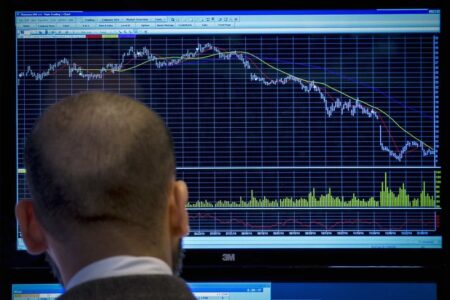© Reuters.
Investing.com — Shares of most Asian firms that supply materials to Nvidia Corp (NASDAQ:) retreated on Wednesday in anticipation of hotly-awaited second-quarter earnings from the chipmaker, with particular focus on its outlook for artificial intelligence.
Japan’s Advantest Corp (TYO:), which supplies semiconductor testing technology to Nvidia, fell 1.7%, while South Korea’s SK Hynix Inc (KS:), which supplies Nvidia with memory chips, fell 1.5%.
TSMC (TW:) (NYSE:) – also a key supplier to Nvidia, was an outlier, rising 1.3% after it dismissed rumors that its annual revenue was set to fall more than initially forecast.
Nvidia’s shares fell sharply from record highs on Tuesday as markets hunkered down ahead of its .
Nvidia is expected to report earnings per share of $2.07 on revenue of $11.1 billion, but its outlook for third-quarter revenue will be closely watched, given that it is expected to offer a barometer for AI demand.
Nvidia’s shares tripled in value this year after it clocked much stronger-than-expected first-quarter earnings and also forecast a sizeable bump in revenue on the back of increased AI development.
Wednesday’s earnings, which are due after the U.S. market close, are expected to show whether the chipmaker delivered on its AI forecasts.
A slew of brokerages also hiked their price targets on Nvidia ahead of Wednesday’s earnings.
Optimism over AI demand had fuelled a rally in Asian chipmaking and technology stocks earlier this year, with the sector now primed for more gains if Nvidia’s results exceed expectations.
The prospect of higher AI demand offers some respite to global chipmaking stocks, which are otherwise struggling with what is seen as a cyclical downturn after two strong years. Majors including TSMC and Samsung Electronics Co Ltd (KS:) had warned that AI demand may not be sufficient in supporting the industry through an ongoing slump in global chip demand.
Pressure from rising U.S. Treasury yields and a higher-for-longer interest rate outlook also weighed tech sector valuations, ahead of more cues on U.S. monetary policy this week.
Read the full article here












